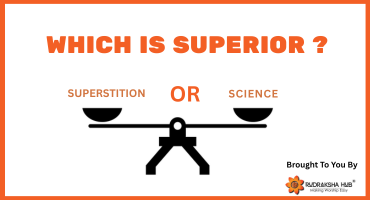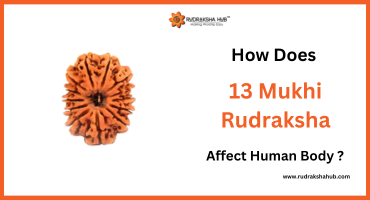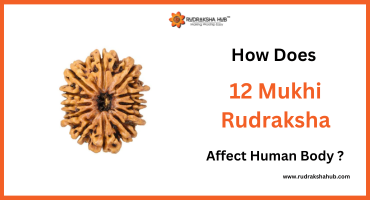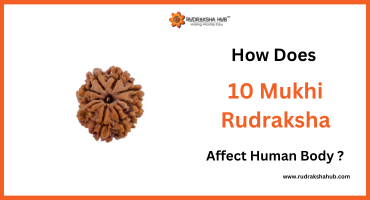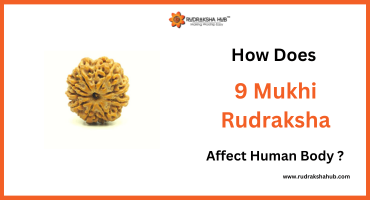
Where Are Original Vedas Kept?
Hindu religion is essentially based upon the four Vedas, namely, Rig Veda, Sama Veda, Yajur Veda, and Atharva Veda. There are some other Puranas like Shiva Purana, Vishnu Purana, Shrimad Devi Bhagavad Purana, and Garuda Purana. Apart from Vedas and Puranas, there are Upanishads, Granthas, and other Vedic texts people generally follow in normal routine lives.
These writings are the conveyers of the original thought processes of the ancestors of Hinduism followers and the reasons as well as the way forward for a specific lifestyle or problem.
These Vedic writings are the gateway to knowledge, growth, success, transformation, and above all, the pleasure of utilizing the human form of the birth cycle to some good use.
Generally, it is believed in Hindu Vedic texts that a person is born a human after having gone through seven life transitions and only those souls that find good solace in the human race are eligible to go to Vaikuntha Dham (the abode of Lord Vishnu), thereby, attaining Salvation (Moksha).
Bade Bhaag Maanush Tan Paava,
this is the saying which literally means that it is the highest level of luck and sacrifice and devotion that leads a soul to take rebirth as a human being.
Thus, Vedic texts are the source of wisdom and knowledge so that the human being achieves this cycle of a lost and wandering soul, taking continuous reincarnations to find a humble exit in the form of Salvation.
These Vedas and Puranas are also essential because they don’t just preach about “What needs to be done”, rather they also teach about “What should be avoided” and “What to do if something goes wrong”. These learnings make the person a better version of themselves and give rest to the continuous cycle of life and death.
These Vedic texts were the backbone of the rich and healthy culture of Hinduism we see rampant today. Although, since these texts were too old, there have been multiple decades since the existence of original texts and scripts have been traced around.
A huge collection of recovered texts and scriptures are kept in a facility named Bhandarkar Original Research Institute (BORI), Pune, Maharashtra, India. Many of these articles, texts, scriptures, books, works of literature, documents, and the like have been retrieved from various places in excavation searches or history hunting. These places have also been secured as Areas of Spiritual Importance by the researchers.
These areas are the places where the elderly population shows the relevance of the found pieces of literature and the proof of their existence in the earlier time zones.
Rig Veda:
The oldest and the first ever literature defining the values of life existence, the value of worship and tradition, and the importance of following rules and regulations. Rig Veda talks about the Gods to be worshipped, the Goddesses of a situation and of the occasion, the spiritual powers in things and nature, and the like.
Rig Veda also talks about different policies of the modern world like financial management, family and relationship management, societal behavior, moral and ethical forms of being and working as well as progressive ways of thinking for a better lifestyle.
Composed by Ved Vyasa, Rig Veda means the collection of knowledge, and true to its name, Rig Veda is the first ever written source of information about a lot of things helping in the process of healthy and happy living.
The original manuscript of Rig Veda has been discovered from an undiscovered source and has been stored at BORI, Pune. The original manuscript is over 1000 years old and thus, it has been tried to decipher multiple times in multiple manners as per everyone’s own understanding of the same.
Some parts of Rig Veda, that have yet not been discovered are still lying in the open and waiting for its discovery to uncover more ideas in the form of knowledge and information.
Sama Veda (Sam Veda):
Sama Veda is the second most complicated, second-discovered Vedic literature talking about Soma- sacrifices. Sama Veda talks about what sacrifices are needed for what reasons and how these sacrifices are executed to attain what end goals.
These sacrifices can be barter sacrifices to attain a particular goal or sacrifices to invoke the supreme powers of the concerned departments.
Sama Veda is basically the coordination between the mind and heaven. The mind is the frontline organ in a body and heaven is the topmost level in the universe. Basically, if the mind is not able to make justice to the mind and body matters, heaven will not be able to make way into the Satvik (non-desirable) lifestyle of human beings.
Majorly known as music literature, Samaveda has been able to foray into the side of music, poetry, and rhythm. In short, Sama Veda talks about the sacrifices needed to make to attain a goal in literal terms as well as in terms of maintaining social and biological balances.
Sama Veda is generally like Rig Veda only except for the fact that Sama Veda is more about Mind for Body and Rig Veda is more about Mind and Body.
Sama Veda was mostly a sung literature and not a lot about it was originally written. Yet, the eldest and aged manuscript of parts of Sama Veda was discovered in the village Kauthuma and Jiminiya in Northern and central India respectively.
These parts of Sama Veda have been stored at BORI, Pune, and the remaining parts of Sama Veda are sung and narrated by the earlier inhabitants of these villages in India.
Yajur Veda:
The third and one of the most controversial Vedas of Hindu works of literature, Yajur Veda is the step-by-step guide on what to do and what not to do in the rituals and Spiritual Poojas. Yajur Veda is the literature that is divided into White and Black.
White Yajur Veda talks about the happy, holy, and celebrations-based rituals and Poojas to call in positive energies and keep their blessings alive and active.
Black Yajur Veda talks about the negative, black, and dark side of rituals and Pooja to worship the spirits, omens, ghosts, and other occult sides.
Yajur Veda is the entry gate to spiritual awakening if understood and followed in the manner of the way it is created. It is the cluster of the spiritual sense of practice for attaining the ultimate goal of happiness and satisfaction and Salvation from the circle of life and death.
Alternatively, Yajur Veda is the crisis management literature because it teaches the most important thing: What if things go wrong? This is precisely why, even if Yajur Veda is followed less, it is highly valued and becomes beneficial if the person is able to cut through the steps in the most progressive manner.
Yajur Veda is the perfect literature to talk about a person’s alternate ego, the one that forces him to make rash decisions or impulsive actions based upon gut instinct and minimal thinking. It, therefore, defines a step-by-step guide on what not to do and how to improve a wrong already done.
Yajur Veda is considered one of the most progressive literatures, out of the four locations because Yajur Veda is the one guide that holds the solutions to the problems and not just enlists the problems, unlike others.
Yajur Veda has not completely recovered. Some parts of Yajur Veda were discovered buried under a tree in Orissa and they have been preserved at BORI, Pune. Apart from that, only the residents of the village talk about multiple lessons they have inherited from their folks and they say those were the learnings from the Yajur Veda.
Thus, whatever we know about Yajur Veda is through some of the original manuscripts found and secured at the BORI for the general public.
Atharva Veda:
Atharva Veda is the fourth and the most modern kind of literature, although written in the olden times. It majorly speaks about the philosophies of living and the morals and ethics of general lives. Atharva Veda is the literature that talks about the practicality of living a good, healthy life.
Decisions about how to eat, how to operate, how to behave, how to heal, medical science, spiritual science, practicality, philosophy, psychology, and the like have been talked about in Atharva Veda.
Not everything that looks simple is exactly that simple. Knowing well the tend to modernize and develop with time, the creator of Ataharva Veda, Rishi Ved Vyasa, and Rishi Atharva incorporated hints towards living a better and happier lifestyle following these moral and ethical codes of behavior.
Atharva Ved is mostly the book of knowledge to preach about lifestyle changes, issues, and other things that only pure spirituality cannot suffice alone.
The original manuscript of Atahrva Veda is completely missing, except for a specific chapter of the same that tells in jist what the entire Atharva Veda wanted to say in a compilation of 20 different books, 730 hymns and 6000+ stanzas in pure Sanskrit.
Some of these books have been discovered in compromised states from the relevant locations and are preserved at the BORI, Pune. Other parts are still missing and the search is still in progress until then.
A conclusion that can be derived from the entire episode is that the original manuscripts of the Vedas have been stored at a good facility at BORI, Pune. The other parts, undiscovered are yet to be discovered. Some of the parts of the scripts that could be deciphered, considering the fact that all the scripts are written in pure Sanskrit, are the subject matters of the ongoing research.
These manuscripts have taught us a lot of knowledge to us for several years and will continue doing so in the times to come.
Why are Original Vedas Original Manuscripts Not Available?
The Vedas have been written in the pre-historic era, when spiritual figures were on Earth, setting up the premise for the historical practices to take place. Since then until now, there have been multiple times that there have been new revelations and new discoveries.
With the advancement of technology, there also has been a quick shred of older things. This is why, a huge part of the entire manuscript has worn out.
Also, earlier, the material used to write these scripts were natural extracts and natural products. Some of these have been rotten and mixed as manure in mother nature. Some of these were able to be discovered from unexpected places. Some of these are yet missing.
A huge group of spiritual believers believes that these Vedas and the parts that are missing are still there on Earth. They contain knowledge that is Trikaaldarshi (the ability to see beyond the present and the future in the present). This knowledge needs a specific timeline to be disbursed so that it can sink in with the people properly and is not taken for granted.
Also, when the information is discovered after much hard work, it becomes an issue of national and international importance and that makes for a well-known way of spreading with everyone and sinking in every mind with proper logic and understanding.
For this reason, it was already decided and written in the Vedas for providing a specific knowledge bit by a specific time. This way, every bit of knowledge will be adhered to and understood in the best possible way.
Some people also believe that the discovery of each piece of information is also written in the Vedas and not everyone is adept to read it, so not everyone understands the value of the same.
Let us see when we discover a new piece of information. Stay alert, stay active, and keep reading articles from Rudraksha Hub..!!

